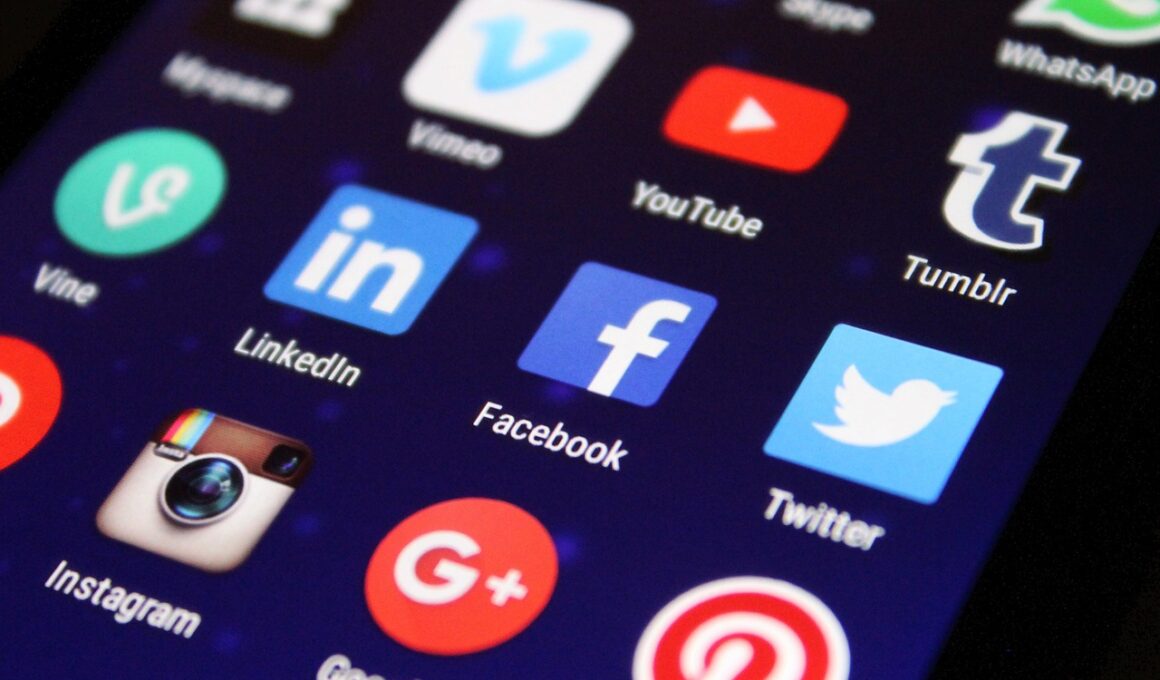Innovations in Loyalty Programs for Social Media Platforms
The evolution of loyalty programs on social media platforms has transformed the way brands engage with consumers. Innovative strategies focus on personalization, using customer data to tailor experiences uniquely for individual users. This personal touch can significantly enhance user engagement and retention. Brands now leverage advanced analytics to track user interactions and preferences, enabling them to deliver timely rewards that resonate with their audiences. For instance, brands can offer exclusive content or discounts based on user activity, creating a sense of exclusivity. Moreover, integrating gamification elements into loyalty programs encourages participation and interaction on social media channels. Users earn points or badges for specific actions such as sharing posts, watching videos, or leaving reviews. These elements not only enhance user experience but also promote brand loyalty. Additionally, partnerships between social platforms and brands can yield unique offers that encourage cross-platform engagement. Brands often create campaigns that are specifically designed for social platforms, using trending topics or hashtags to attract attention. Ultimately, these innovations are redefining customer engagement strategies by making interactions more meaningful and rewarding for the consumers. Brands that successfully implement these techniques can expect to see a loyal customer base grow.
A prevalent trend in loyalty programs involves incorporating social sharing features. These features empower users to share their loyalty progress and rewards with their networks, effectively turning customers into brand advocates. When users post achievements or redeem rewards on their social profiles, it increases visibility for the brand and fosters a community around it. The social proof generated can enhance their appeal, as their friends are more likely to trust recommendations from people they know. Incentivizing social sharing not only boosts engagement but also increases the potential customer base by reaching new audiences. Furthermore, brands can utilize referral rewards, motivating existing customers to introduce new users to loyalty programs. This technique creates a win-win scenario where both parties reap benefits, often in the form of discounts or special offers. Brands might also focus on creating shareable content, such as infographics or videos that highlight loyalty benefits. Engaging storytelling can draw users to participate actively. By harnessing the power of social networks, brands are finding innovative ways to enhance loyalty program effectiveness. This approach transforms participation into a collective experience, making users more likely to stay loyal over time.
Leveraging User-Generated Content
User-generated content (UGC) has emerged as a potent tool in making loyalty programs resonate more with consumers. When brands encourage users to create content related to their products, it builds a sense of community and ownership among consumers. UGC increases engagement by inviting customers to participate actively in their brand’s story, whether through photos, videos, or reviews. Incorporating UGC into loyalty programs can lead to authentic marketing that resonates more deeply with potential new customers. Brands can run contests where users submit photos showcasing their favorite products in use. This not only provides valuable content for the brand but also rewards active participants with loyalty points or other benefits. Displaying user content prominently on brand pages also fosters a connection between users and the brand. This authenticity can amplify trust and loyalty among customers. Brands have begun to recognize that showcasing real customer experiences boosts engagement tremendously. When choosing to trust a brand, consumers frequently rely on UGC as a form of social proof. Ultimately, the more a customer feels connected and validated, the more inclined they are to remain loyal to the brand. This strategy effectively strengthens emotional ties and participant loyalty.
Another innovative technique emerging in loyalty programs is the use of augmented reality (AR) experiences. AR technology offers consumers immersive ways to interact with brands, propelling traditional loyalty programs into exciting new dimensions. For example, brands may create AR-enabled rewards where customers unlock unique content or experiences directly linked to their purchases or activities. This not only enhances engagement but also makes the experience feel adventurous and gamified. Engaging consumers through interactive features can create memorable experiences that encourage brand loyalty. Companies might also utilize AR for product promotions, allowing users to visualize how products would look in real-life settings through their devices. This innovation not only serves to provide valuable service but also ties into customer loyalty. While traditional programs may offer discounts, the unique experiences made possible through AR can draw customers back in a way discounts cannot. The interplay between technology and creativity is reshaping loyalty programs, enabling brands to stand out in an increasingly crowded marketplace. As AR technology continues to evolve, potential exists for ever more engaging applications within loyalty programs, ensuring lasting connections between customers and brands.
Subscription-Based Loyalty Models
Subscription-based loyalty models are gaining traction among brands, offering compelling alternatives to traditional loyalty routes. By charging a subscription fee, brands provide exclusive access to unique services, products, or discounts to loyal customers. This model can enhance consumer loyalty and generate consistent revenue. The appeal of this model lies in the value it provides – customers have access to perks that feel personalized and exclusive. For instance, beauty subscription boxes may offer curated products tailored specifically to each subscriber’s preferences. This commitment to personalization ensures that customers feel valued and appreciated. Moreover, these subscription services often promote a sense of community through members-only events, content, or discussions. Valuable interaction points foster connections between consumers and brands, leading to increased loyalty. Brands such as streaming platforms have harnessed this concept effectively, offering their loyal customers exclusive content or early access to new features. As companies explore new avenues for engagement, subscription loyalty models demonstrate a sustainable method to not only attract but also retain consumers. Ultimately, this approach continues to reshape the landscape, evolving how brands think about customer engagement and long-term loyalty.
Another notable innovation in loyalty programs is utilizing artificial intelligence (AI) for enhanced customer insights. AI technologies are capable of analyzing large volumes of data, identifying trends and preferences that inform loyalty program adjustments. By understanding how customers interact with a brand, companies can refine their loyalty offerings, ensuring they remain relevant to consumer desires. For example, AI-driven platforms can predict the types of rewards users want, converting this data into actionable strategies. Predictive analytics allows brands to anticipate customer behaviors, proactively offering tailored incentives that align with users’ interests. Additionally, AI can also automate personalized communications, ensuring messages resonate with individual users based on their behaviors and preferences. Leveraging AI helps brands stay ahead of the curve, allowing them to pivot their strategies based on real-time data. By integrating AI into loyalty initiatives, companies maximize engagement potential and maintain long-term relationships with customers. As AI technology improves, the opportunities for personalization in loyalty programs will expand, compelling consumers to stay engaged consistently. This innovation serves as an integral part of modern loyalty strategies, ensuring relevancy in the fast-paced digital landscape.
Social Responsibility in Loyalty Programs
Many companies incorporating social responsibility into their loyalty programs have witnessed a significant impact on user engagement and consumer loyalty. By aligning with causes important to their customers, brands can engage emotionally on another level. Consumers often prefer brands that commit to sustainability and philanthropy, making social responsibility a smart strategy for attracting and retaining customers. Loyalty programs might include incentives where users earn points for sustainable actions, such as recycling or volunteering. These initiatives promote social good while rewarding customers for choosing ethical products or services. Moreover, brands can choose to donate a percentage of profits to charitable causes when customers engage with their loyalty programs. This unique approach not only differentiates brands in competitive markets but also attracts socially-conscious consumers. Highlighting these social efforts can foster a positive brand image and deepen emotional connections with the customer base. The modern consumer values authenticity, and integrating social responsibility into loyalty programs resonates well amid the growing trend toward ethical consumption. Ultimately, the impact of combining loyalty programs and social responsibility continues to shape brand strategies. Organizations successfully implementing these values will experience enhanced customer retention and engagement.
In conclusion, the innovations in loyalty programs, particularly within social media platforms, provide brands with powerful tools to enhance user engagement significantly. Techniques such as social sharing, gamification, user-generated content, and AI-driven insights help brands connect authentically with consumers. The rise of subscription-based models and the inclusion of social responsibility demonstrate evolving consumer preferences and values. By embracing these novel approaches, brands can cultivate meaningful relationships with their customers. The competitive landscape requires continuous adaptation, ensuring loyalty programs remain relevant and effective. Engaging customers through personalized experiences, exclusive content, and community-building initiatives will drive brand loyalty in the long run. Companies willing to innovate and incorporate these trends will stand out amid numerous options available. Additionally, the implementation of cutting-edge technologies will ensure brands stay ahead of the competition. As the market continues to evolve, understanding and embracing these trends is crucial for brands aiming to succeed. Fostering customer engagement is essential not only for retention but also for expanding brand reach through referrals and advocacy. Ultimately, loyalty programs that leverage innovative techniques will create lasting consumer loyalty, driving both customer satisfaction and business growth.


